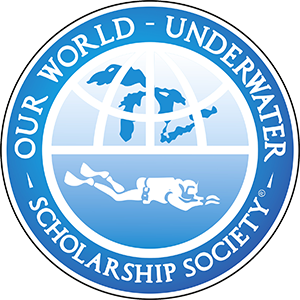On the 5th of June I arrived at Heathrow airport (somewhat worse for wear) after a 22 hour flight from Sydney via Dubai. This was the start of the European leg of my scholarship and after 5 hectic days of catching up with friends and seeing the sights in London I was winging my way to Murcia in the South of Spain where I was meeting up with Mark Polzer of Texas A&M University’s Institute of Nautical Archaeology. For the last two years Mark along with Spanish Maritime Archaeologist Juan Pinedo have surveyed and begun to excavate a Phoenician and Roman shipwreck off the coast of La Manga at the site of Bajo De La Campana.
The name Bajo De La Campana refers to what was once a small island just off the coast of La Manga. Throughout history this island was a navigational hazard and the curse of local mariners with a number of ship being wrecked upon it. In response to these losses local authorities installed a bell on the island to warn approaching ships and as a result it became known as the Island of the bell. In the 1950s the Spanish Navy decided to remove the threat by dynamiting the island and as a result several tons of boulders now cover the remains of at least two wrecks; one Phoenician (dated to the end of the 7th century B.C) and one Roman wreck (2nd-century B.C).
Upon arrival our first job sounded fairly straight forward – go down to the site at 18 metres and clear away the overlying rocks and boulders. Simple however, when a 1 tonne and two 500 kg lift bags were put into the zodiac I began to get an idea of the scale of the job ahead. And so it was over the next two weeks doing two 45 minute dives per day we used our combined skill, guile and brute strength to lift and move rocks and boulders ranging from the size of bowling balls to dining room tables always being careful not to disturb the ceramics and other artefacts that covered the seafloor.
It wasn’t all work though we embraced Spanish customs so after the days diving we returned to the house around 3 pm for a cooked lunch and then an afternoon siesta. Also on Sunday we had the day off so we travelled to the nearby town of Cartagena to visit the National Museum of Maritime Archaeology which contained a display of artefacts recovered from the Bajo site. This was a really great experience as we got to see artefacts from our site after they had been excavated, conserved and finally displayed.
Back to the site – now that we have moved the majority of the boulders our next task was to set a grid over the area to be excavated to ensure that we knew exactly where the artefacts came from. Getting the 2 x 2m grids in place was a time consuming exercise as it required making constant adjustments until all the squares lined up and were accurately positioned. Once this job was completed we were ready to begin excavating using airlifts (as pictured below). Each day two teams of four divers would descend to the site and continue excavating by carefully hand-fanning the overlying layers of sand away from the artefacts. Once uncovered the artefacts were photographed, their location recorded and then finally removed to the surface to begin the cataloguing and conservation process.
As the excavation progressed some really amazing and rare artefacts began to be uncovered including a range of ceramics and also metal ingots. However, I will always remember my last day of diving on the site as I was fortunate enough to be in the team responsible for removing three elephant tusks from the site and bringing them to the surface. This was a totally surreal experience there I was swimming along at 18 metres holding this massive elephant tusk that had not seen the light of day for over 2000 years and all I was thinking was don’t drop it!!!!
Over the few weeks that I was working at the Bajo excavation I was fortunate to be working with a really great group of people and on my last Saturday night in La Manga we had a combined 4th of July and leaving bbq and with great food and plenty of beer we celebrated on into the early hours of the morning. It was hard to leave this excavation and the friends I had made but I will always have the memories of my time in Spain and I was now off for another adventure this time in Lithuania.




